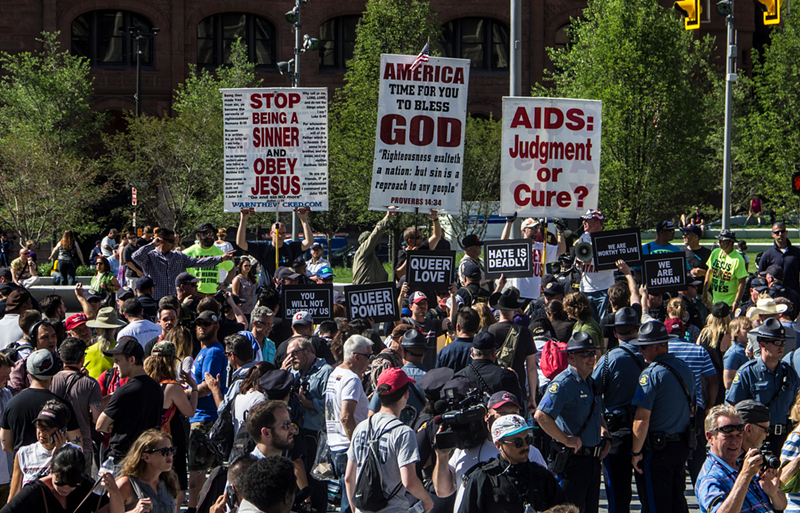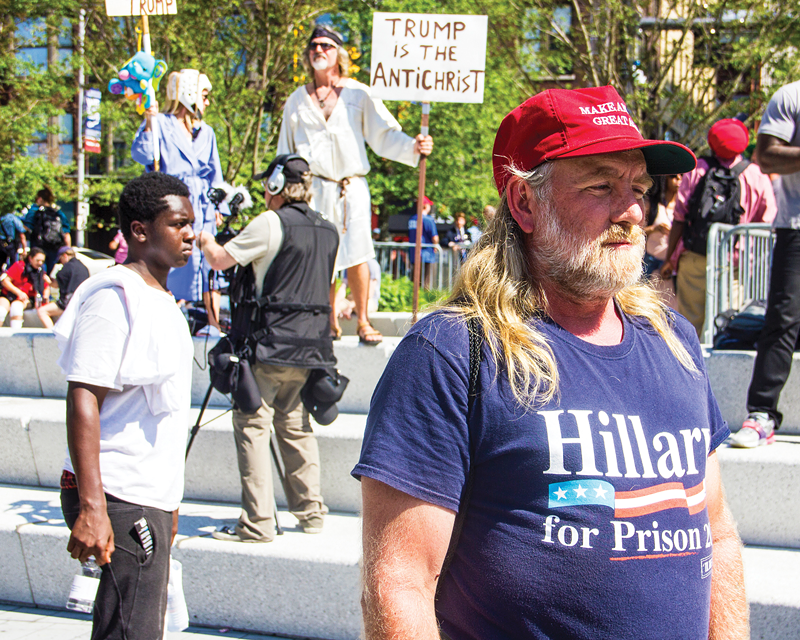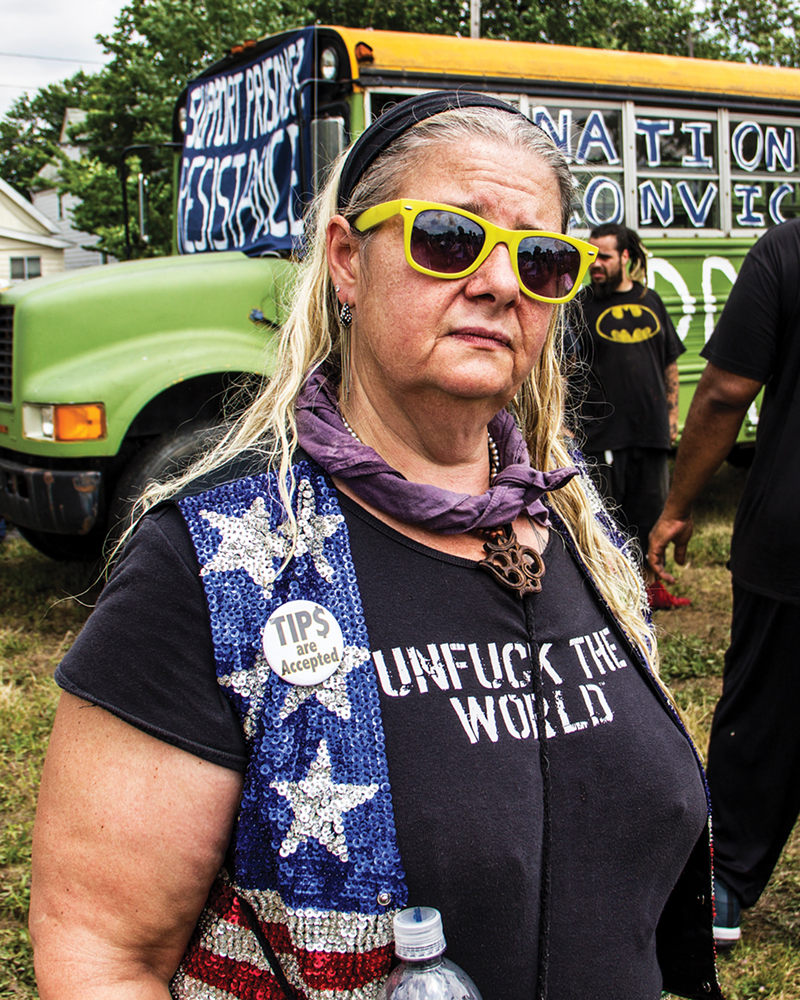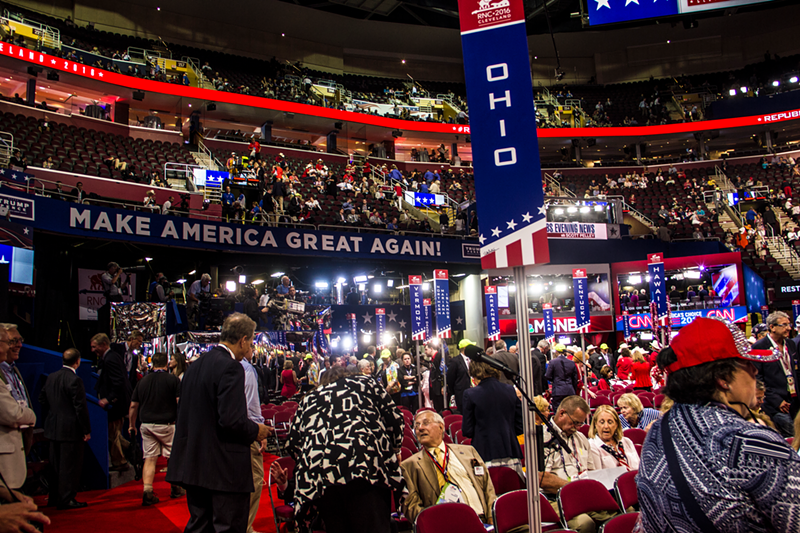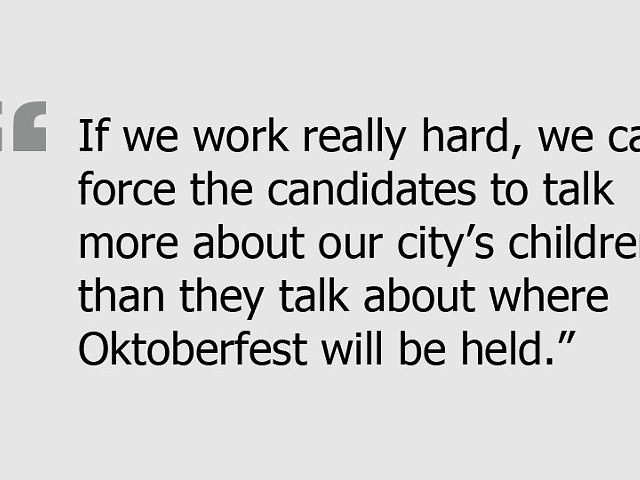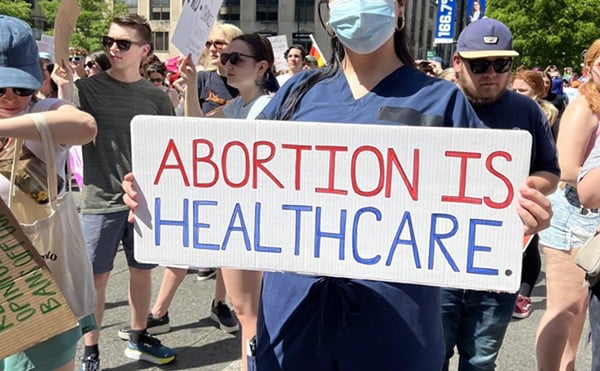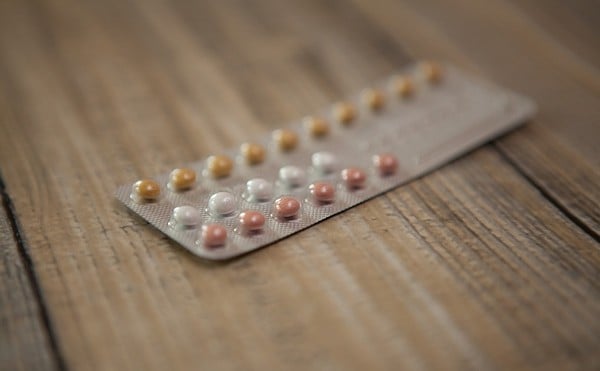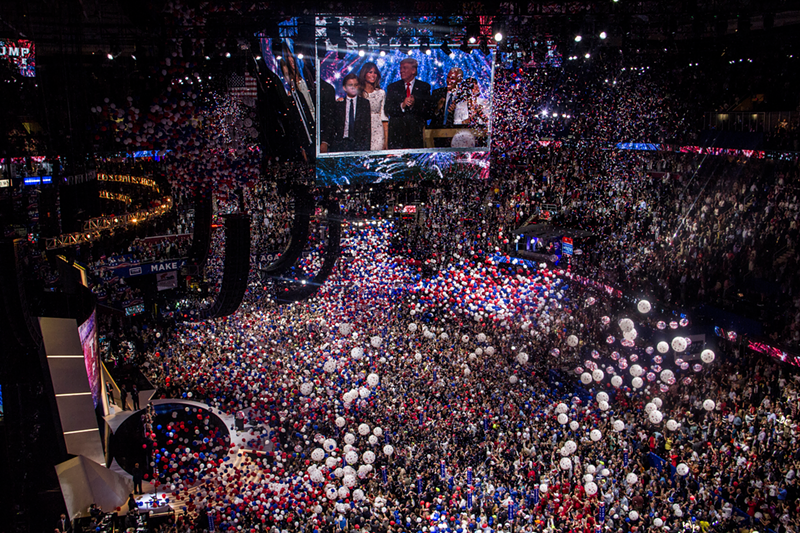
CLEVELAND - The day after the Republican National Convention kicked off, Cleveland’s newly revamped Public Square had already become a real-life manifestation of an online news comment section.
I was there to cover the convention and surrounding protests, but it was difficult to know where to start. Should I interview the young men with camouflage “Make America Great Again” hats and assault rifles over their backs? Or the ones with the white T-shirts emblazoned with the name “Tamir Rice” and spattered in fake blood? Maybe the Industrial Workers of the World, who were waving black and red flags, sometimes wearing bandanas across their faces, and debating a small group of libertarian protesters about the virtues of communism?
All around the tumult were many of the 2,800 law enforcement officers who had descended on Cleveland from as far away as California. Some wore their everyday uniforms, while others sported dark blue military fatigues. Cleveland Police themselves opted for mountain bikes with a mix of light-weight riot gear and what appeared to be motocross helmets.
Cleveland was ready for trouble, the thick blue line seemed to suggest.
Michael Ryan of Taylor Mills, Ky., a supporter of GOP presidential nominee Donald Trump, stood amidst all this, squinting in the July sun and wearing a “Hillary for Prison” T-shirt.
Ryan patiently explained to me that he is very concerned about illegal immigrants, Muslim terrorists and Trump’s Democratic opponent Hillary Clinton as well as her predecessor, President Barack Obama.
In the past, he says, that led him to politicians outside the Republican mainstream like former U.S. Rep. Ron Paul of Texas. Ryan has been heavily interested in various strains of libertarian and conservative alternatives to the Republican Party for years, he told me.
The events that led him to get on the Trump train came slowly, beginning with the tea party’s rise post-2008.
“I wrote in tea party in my voter registration. I’ve been interested in them since the beginning. Ron Paul’s the only presidential candidate I ever gave money to,” he says, lamenting that neither Paul nor the tea party movement has what it takes to make a serious run for the nation’s highest office. “I believe Trump is someone who has basically infiltrated the Republican Party. He’s the only shot we’ve got at this particular time in history. I don’t think the country’s going to survive eight years of Hillary.”
Ryan’s man, the real estate mogul and reality TV impresario often known simply as “The Donald,” was ostensibly the reason thousands of people were in Cleveland sweating in the hot sun, shouting and protesting one way or another.
Trump has caused rapturous celebration among a large, mostly white, mostly male chunk — currently, polls suggest about 40 percent — of America’s electorate. Meanwhile, his statements about women, immigrants, Muslims, Black Lives Matter and other groups have caused deep anxiety from nearly every other corner of the country.
But the protests and the even more chaotic scene behind the convention curtains have roots beyond Trump’s unlikely and game-changing candidacy. During the four days of the Republican National Convention, America’s increasingly intense fears and fault lines were brought into the sunlight shining on one square mile of downtown Cleveland.
To beat the horrendous traffic sure to converge on the RNC, I found myself speeding up I-71 in a rented Ford Focus at 2:30 a.m. on July 18, the morning the convention kicked off.
The drive through the flat darkness of central Ohio — near the same wilting coal and steel country whose despairs have fueled any number of Trump supporters’ ire — gave me time to think about the convention’s troubling context.
America has been trembling in the past year, in some part thanks to Trump himself. He has, over the course of an improbable primary campaign, equated Mexican immigrants with rapists, retweeted white supremacists, suggested barring Muslims from entering the United States, made uncounted misogynistic statements toward TV reporters and on and on. New outrages come by the week, and each time they do, Trump improbably surges in the polls.
As I gripped the wheel of the Focus and zoomed down the pavement, Trump sat poised to do the recently unimaginable: claim the nomination of one of the country’s two major political parties.
Many have ascribed Trump’s rise to a growing, regressive angst among white folks tired of the status quo, of factories moving, coal plants closing, of feeling like they’re losing security and economic ground as America’s demographics change. But there’s also another side to the nation’s fear that has loomed large over the past months.
Two weeks prior to my drive, police shot an unarmed black man named Alton Sterling in Baton Rouge, La. while he was facedown on the ground. The next day, police in Minnesota shot a black man named Philando Castile siting in the passenger seat of his girlfriend’s car. She filmed the aftermath, Castile bleeding out next to her while her 4-year-old sat in the back seat.
Days later, five police officers were shot and killed by a sniper in Dallas, and just days after that, three more officers were shot in Louisiana. Protests and counter-protests have gripped various cities across the country, including Cleveland, which has seen its own high-profile police shootings over the past few years.
Things have been tense, to say the least.
As I approached the home of the Rock & Roll Hall of Fame, a lightning storm raged overhead and a staticky radio station played REM’s “It’s the End of the World As We Know It.” I sighed and pressed the off button.
There is no way the Republican Party could have known all this was coming when they tapped Cleveland to host the convention back in July 2014. GOP Chairman Reince Priebus touted Cleveland’s huge convention center and ample hotels as reasons for the pick.
But much has happened to make Cleveland a microcosm of the nation’s frustration.
Four months after the announcement that the RNC was coming, Cleveland Police shot and killed a 12-year-old boy named Tamir Rice while he stood in the west side’s Cudell Recreation Center with a toy pistol in his belt. It was just the latest in a series of horrific incidents between the police and the community, including a 2012 car chase that ended with Cleveland officers firing 137 rounds into a car occupied by unarmed couple Malissa Williams and Timothy Russell.
Eventually, the six officers involved in that shooting were fired, but it took four years and a Department of Justice investigation into that incident and others like it to get to that point.
The Cleveland Police Department was engaging “in a pattern or practice of using unconstitutional force,” that investigation, released December 2014, said. Despite the increased scrutiny on the department, many racial justice advocates remain unsatisfied. A Cuyahoga County grand jury convened by county prosecutor Timothy McGinty declined to indict the officer who shot Rice, for example, raising ire among activists.
The tension between police and the black community in Cleveland is a symptom of larger issues there, as it has been in cities across the country.
Cleveland has the second-highest percentage of residents below the poverty line of any big city in the country at nearly 40 percent, according to Census data. Only Detroit is higher.
A study last year by urban academic Richard Florida at Toronto University’s Martin Prosperity Institute found Cleveland’s metro area was the nation’s most segregated economically. Cleveland also consistently ranks in the top five most racially segregated cities in the country.
This is the city picked to host the coronation for the most racially divisive candidate in modern history.
It almost seems unfair. After all, Trump’s candidacy is hardly Cleveland’s fault. Like many counties in the state, Ohio Gov. John Kasich won Cuyahoga County’s GOP primary handily, receiving more than 78,000 votes to Trump’s 47,000. And the county doesn’t look likely to hand itself over to Trump in the general election, either — Cuyahoga County hasn’t voted for a Republican president since 1974.
On the convention’s first day, organizers from 29 local activist groups convened in the city’s predominantly low-income and racially segregated east side for a large rally and march against Trump and the RNC called End Poverty Now. Everyone from indigenous rights groups wearing patches reading "respect existence or expect resistance" to local union members stood in the blazing sun to listen to Prophets of Rage, a super group of sorts made up of rap group Public Enemy’s frontman Chuck D, Rage Against the Machine’s Tom Morello and others.
Wearing a star-spangled vest and a T-shirt that said simply, “Unfuck the World,” Leatrice Tolls was at the rally helping a local Food Not Bombs group prepare refreshments for attendees. A one-time worker for the Democratic Party and longtime activist and community organizer in Cleveland, Tolls told me that the RNC had made things around the city tense for a variety of reasons.
“We’re on edge,” she said. “There’s a lot of concern with people saying they’re going to come in and shoot Black Lives Matter activists. We’ve had a lot of police shootings going on here. We’re tired. We’re fighting really hard.
“There’s a shit-ton unresolved when police can shoot you 137 times,” she says of the Cleveland Police shooting of Williams and Russell, which happened near her house. “It’s unresolved when Tamir Rice can be dropped in two seconds and there’s no accountability. It’s unresolved because there is no justice.”
After the band finished its set, I followed attendees eager to vent similar frustrations into the streets.
Sixty-three-year-old Amir El-Hajj Khalid Samad was at the front of the march on a bullhorn leading protesters to downtown’s Perk Park. Samad is the CEO of a nonprofit called Peace in the Hood/Coalition for a Better Life. Like Tolls, he says the RNC exacerbated already-existing frustrations in Cleveland over police shootings, economic disparities and segregation.
“You can see it all around,” Samad said of the tension since the convention came to town. “You can feel it. Because of the rhetoric. Because of the divisiveness, the hate that comes out of [Trump’s] mouth. It was here before, but not like this. We have these dividers coming in here now.”
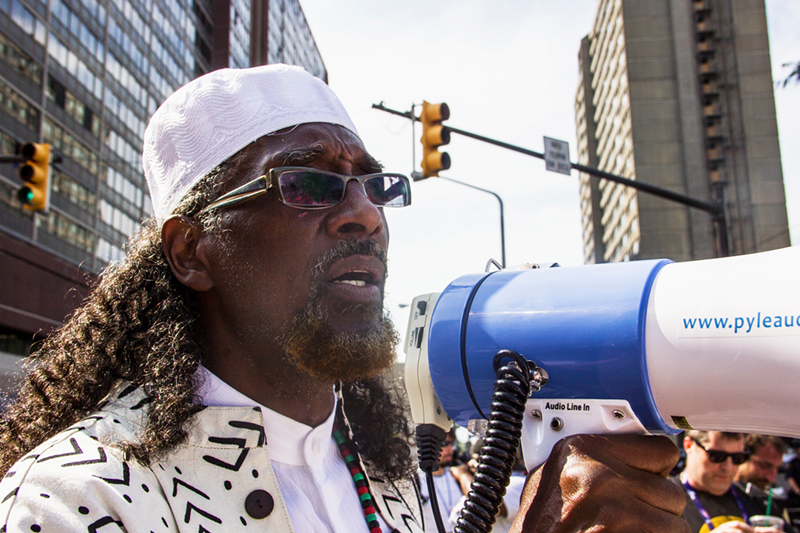
Before Trump, the Republican Party harnessed the white-hot nuclear energy coming off the insecurities of white working-class voters via the tea party movement, which arose shortly after Obama’s election.
For a while, the GOP had a handle on that energy, winning control of both chambers of Congress as well as numerous state and local government seats. But more and more, it looks like the party has suffered a core meltdown. The radiation has spread from the busted heart of the Republican Party, and mutated forms of conservatism are popping up not just in the margins but also in places like the party’s nominating convention itself.
Richard Spencer, a 38-year-old Trump supporter who attended the convention, told an Associated Press reporter during the convention that he’d like to see blacks, Jews and Muslims removed from the United States.
“Trust me. Trump thinks like me,” Spencer told the AP. “Do you think it’s a coincidence that everybody like me loves Trump and supports him?”
Elsewhere in Cleveland, young conservatives were branching out. Many hailed themselves members of the so-called alt-right, which you might think of as your scary hipster version of the tea party.
White supremacists and militia members milled around Public Square with assault rifles. Alt-right icon and conservative news site Breitbart editor Milo Yiannopoulos and other young conservatives made appearances at Wake Up!, the “most fab party at the RNC.”
Yiannopoulos was fresh off getting banned for life from Twitter for sparking a racially charged tweetstorm from supporters against Ghostbusters reboot star Leslie Jones, who is black. The Wake Up! event seemed aimed at enticing the LGBT community to the alt-right’s rabid Islamophobia using the recent mass shooting in Orlando by a Muslim man as a gateway.
Not everyone in the GOP is down with Trump’s alt-right revolution. A group of anti-Trump delegates, including some supporting U.S. Sen. Ted Cruz of Texas, worked through the party’s rules committee to attempt to force a state-by-state roll call vote on the convention’s rules. That failed push, which could have freed up state delegates to a so-called “conscience vote” for another candidate, was mostly symbolic and probably would not have resulted in a serious challenge to Trump’s nomination. But it was still a contentious move largely unprecedented in modern conventions.
Selena Coppa, an alternate delegate for Washington State, is a staunch Republican, if an unusual one in the nascent Trump era. She’s an ardent believer in free markets and the Second Amendment, but also believes that the federal government should invest in infrastructure and jobs programs. Coppa was also one of the people pushing anti-Trump efforts.
“I would like to see a piece of linoleum instead of Trump,” the 33-year-old military intelligence veteran said. “I don’t want to wake up in 10 years to us being in a civil war with each other.”
That stance didn’t exactly make her and fellow never-Trump delegates popular at the RNC.
Coppa says some of the security assigned to protect delegates actually helped clamp down on anti-Trump dissent during key moments early in the convention and that a number of Never Trump delegates from other states were blocked into their rooms during Never Trump meetings.
“It’s kind of insane when you have people texting you saying they want to join you, but they’re afraid for their physical safety,” she said. “We’ve been spit on. I’ve felt like I might get in fights. I can handle that kind of thing. But if you’re just a 22-year-old who loves your party, that’s overwhelming.”
Coppa also says much of the antagonism had a racial edge.
“I can’t necessarily tell if they’re garden-grade racists or actual white supremacists,” Coppa, who is of Nicaraguan descent, said of some pro-Trump delegates and security. “But they’ve told me I should go back where I came from.”
Other delegates have also described intimidation. After the fight over convention rules, Utah delegate Kera Birkeland says she was harassed in a bathroom by two Trump supporters, who yelled at her: “You should die. They should pull all protection from the Utah delegation. You should all die.”
Another Utah delegate, Stefani Stone Williams, received an email from Trump’s New York campaign co-chair Carl Paladino the week before the convention saying that she should be “hung for treason” for attempting to block Trump’s nomination.
Paladino doesn’t deny sending the email. In a reply to questions from media, he said, “If the person’s underwear is all bunched up over his or her sensitivity to my reaction then tell the person if he or she can’t take the heat of what he or she dished out, then get out of the kitchen.”
In the end, delegates opposed to Trump were left to cast their votes against him in resignation. Ohio cast all 66 of the state’s votes for Ohio Gov. John Kasich, who refused to appear at the convention. The delegates filed in just before the states’ roll call vote started, having just attended an event hosted by Kasich at the Rock & Roll Hall of Fame.
“I’m a Kasich man,” Ohio delegate Bob Sebo told me on the convention floor. “Have been since day one. On the other hand, John’s out of it now. We’ve got to get on the Trump train and ride him right to the top, because we can’t afford to dally. Hillary’s not going to be sitting in a chair doing nothing.”
After the attempt to derail Trump’s nomination, the convention fell into a predictable rhythm of speeches and posturing tailor-made for the fears of alt-right activists and aggressive pro-Trump delegates.
The convention's first day started off underwhelming. A live band played a cover of the Rolling Stones’ “Honkey Tonk Blues,” lead and backing vocals a little off-key and disembodied from the rest of the music, the whole vibe feeling as if the entire convention was taking place in a country-themed bar in the suburbs on a Wednesday night. But it was only Monday. Next, the house band, led by former Saturday Night Live band director G.E. Smith, played David Bowie’s “Station to Station,” including lines about cocaine. Why not?
Sharron Day — Co-chair of RNC — started the ceremony. Lights went dim. Day banged a giant gavel that thudded like a kick drum. The Parma Fire Department presented the colors. An older delegate in a large, shiny, red, white and blue hat tumbled backward seconds after the cameras zap her onto the convention center’s many giant screens. 25 speakers — many television stars or conservative celebrities — spoke.
Each day, a bevy of TV stars, politicians and Trumps would begin speaking early in the evening and wrap up about 11 p.m. Each speaker, from Happy Days star Scott Baio to former New York City Mayor Rudy Giuliani to Ultimate Fighting Championship President Dana White, had a different version of the same talking points: America is in grave danger, and Hillary Clinton is going to make it worse.
There were many speeches that reached near-apocalyptic crescendos. Topping off a list of things that makes America great, conservative author Laura Ingraham shouted from the convention lectern that the country “is where our dead are buried!” Giuliani warned that “there is no ‘next election’ ” if Clinton is elected.
Former Texas Gov. Rick Perry neatly summed up the end-of-the-world-as-we-know-it tenor of the event with his speech.
“For the next generation, your war is here,” Perry said solemnly. “You don’t have to go search for it. Your people are afraid. Who among you will love something more than yourself? Who will step up and take the fight to the enemy? Because it’s here.”
There were a few twists and turns along the way — U.S. Sen. Ted Cruz gave a speech where he pointedly declined to endorse Trump, only to be greeted by a hail of boos from Trump delegates. But mainly, speakers stuck to the script: America is under attack by Muslims, immigrants, Black Lives Matter activists and Democrats.
Of course, the ultimate carrier of this fearful message was The Donald himself. Trump promised a number of things, but most of all he promised safety and security in a world his supporters find more and more frightening.
Terrorism, protests and animosity “threaten our very way of life,” Trump said, underlining the key theme of his campaign. “Beginning on January 20, 2017, safety will be restored.”
But what threats was Trump referring to? Trying to pin them down was difficult.
Trump claimed that murders have risen at a higher rate than at any time in the last 25 years. He cited statistics saying that homicides have doubled in Washington, D.C., increased 60 percent in Baltimore and risen just as much in other cities.
But the numbers in each city are small, and a few murders tip the scales. In fact, of 63 large cities reporting data, more than half saw murders decrease, a statistic Trump did not mention. What’s more, overall crime rates are still incredibly low compared to their all-time highs in the early 1990s, the last time a self-professed “law and order” candidate was in office.
“The number of police officers killed in the line of duty has risen 50 percent in the last year,” Trump intoned. Later in his speech, he cited the deaths of five officers in Dallas and three in Louisiana. “An attack on law enforcement is an attack on all Americans,” he said.
However, according to stats from the National Law Enforcement Officers Memorial Fund, a non-partisan, police-positive organization, 67 officers have died up to July 21. Last year, 62 officers had. That’s an 8 percent rise. And since Obama’s tenure started in 2008, officer fatalities have actually gone down. That year, 149 officers were killed in the line of duty. The year before, 192 died. In 2015, the last year for which full data is available, 123 died.
The factually shaky statements continued. Illegal immigrants “are roaming free to threaten peaceful citizens,” Trump said, promising over and over again that he would build a wall between the United States and Mexico.
He listed off horror stories about murders and other crimes committed by immigrants, even though law enforcement data suggests immigrants commit fewer crimes and the number of people apprehended at the border is much lower than it was at its high point in the early 2000s. Apprehensions at the border are actually down from 2012, 2013 and 2014 levels.
While Trump claimed that there are 180,000 immigrants with criminal records “threatening peaceful citizens,” the vast majority of those records involve non-violent crimes, with many tied to their immigration status.
Each line got huge applause. Each line was also factually inaccurate, if not wholly false. But the crowd loved it.
“America is back — bigger and better and stronger than before,” Trump said, gesticulating wildly as the crowd boomed “USA! USA!”
Leaving the convention that final night with the crowd’s chants ringing in my ears, I thought about the emotion inherent in so much of what I’d seen in the past few days. Racial justice activists horrified about police shootings and economic inequalities. Trump supporters scared of Muslims, real and imagined cop-killers and some stereotypical murderous immigrants. And beyond that, the shear randomness.
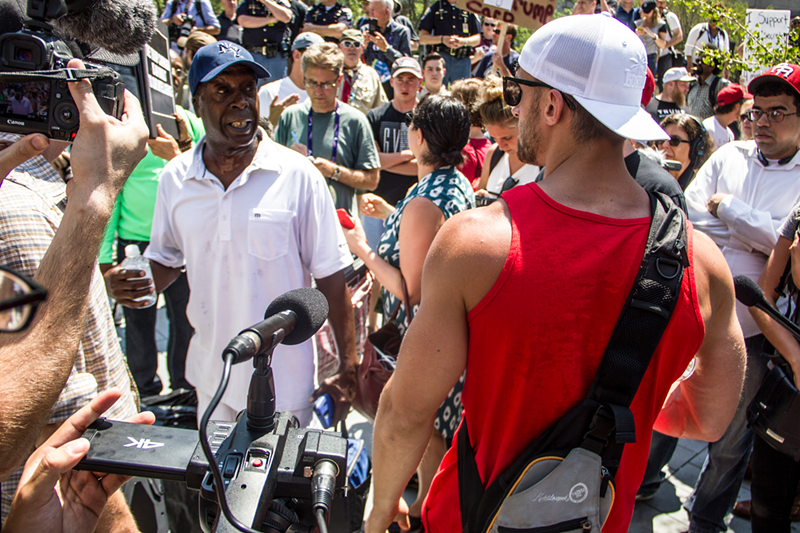
During my time in Cleveland, I'd seen what seemed like all possible permutations of American angst. Revolutionary Communists marched around Public Square for their members who had been arrested at an earlier flag burning, chased briefly by a group of Libertarians wearing “socialism sucks” shirts. Trump supporters argued with anarchists. A group of Christian fundamentalists verbally berated supporters of Gary Johnson, the Libertarian Party’s candidate for president. At the peak of the exchange, a fundamentalist told a female Johnsonite that her “skirt could really provoke a man. Modest is the hottest.” A wild-eyed Johnson supporter rebutted, “your mom really provoked me last night,” and the fundamentalists walked away, knowing they had been bested.
Ahead of me in line at a sandwich shop on the convention's third day, two white supremacists with assault rifles across their backs and extra clips bulging from their pockets filled military surplus canteens with diet lemonade.
I'd seen an aging man in a Sanders for President shirt and a younger one in a Trump shirt chat up two young women in inflatable dinosaur costumes emblazoned with "I heart Diamond Club strippers" across the costumes' chests, watched a man in a tan checked jacket and $300 dress shoes fall asleep repeatedly while a soap opera star spoke at a major political convention, and overheard a reporter for a national news outlet lament, "I'd rather be out catching Pokemon — I got a Gastly fifteen minutes after we got to Cleveland."

It was getting hard to process things.
My head filled with the long, grim slog to November. Trump announced another campaign appearance in Toledo just days after the convention, promising Ohio will remain the focus of that battle. Then there was the sure-to-be tumultuous Democratic National Convention in Philadelphia the next week. And beyond that, the intense social and political disruptions that promise to linger far, far longer as the country navigates a political sea change.
Then I remembered a moment the night before and smiled just a little. I’d left the arena as Indiana Gov. Mike Pence, Trump’s pick for vice president, was wrapping up his speech, only to pause and watch it on a giant screen a block from the arena. Pence presided over several staunch anti-LGBT laws in his state and seemed in lock-step with the party’s recently ratified and extremely homophobic new platform, which also sweeps to the right on just about every other issue.
At a booth nearby, three bearded folks in nun’s habits and makeup — members of the Rock n Roll City Sisters, an offshoot of San Francisco’s drag troupe Sisters of Perpetual Indulgence — chatted up a vendor selling Trump gear. They didn’t seem interested in the shirts at all, but were in good humor. I asked if I could take a photo of the unlikely scene.
“Sure honey!” one said, smiling and opening up a fan with the words “No Fear” written on it.
After four days of fear, it was a refreshing sentiment. ©

